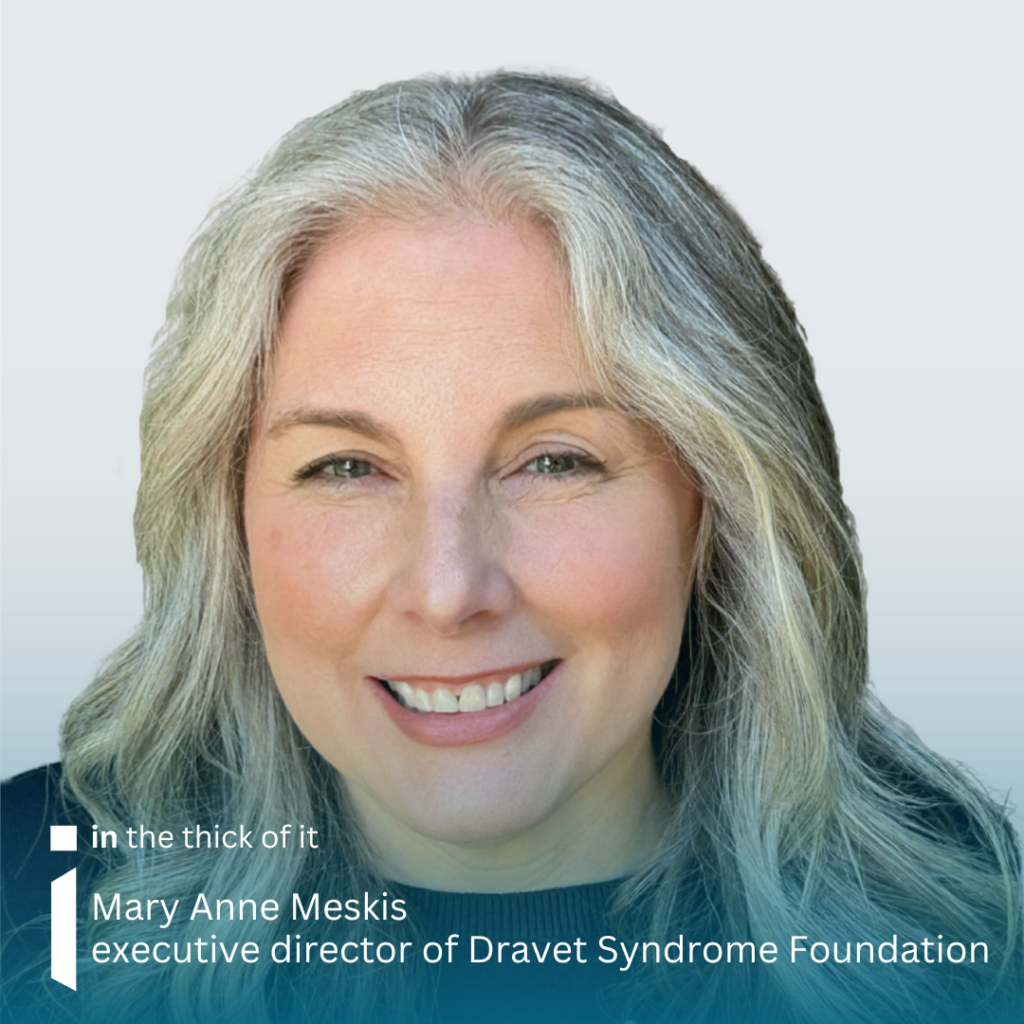Putting you in the heart of the rare community – Dravet Syndrome Foundation
Estimated reading time: 4 minutes
Patient advocacy groups deliver their top three unmet needs and main asks of industry to best serve their rare community. This week’s insights come from Mary Anne Meskis, executive director, from Dravet Syndrome Foundation


The mission of Dravet Syndrome Foundation (DSF) is to aggressively raise funds for Dravet syndrome and related epilepsies; to support and fund research; increase awareness; and to provide support to affected individuals and families.
Dravet syndrome is a rare developmental and epileptic encephalopathy that affects 1 in every 15,700 children worldwide, with most patients carrying a mutation in the sodium channel gene SCN1A. It begins in infancy and proceeds with accumulating morbidity that significantly impacts individuals throughout their lifetime, increasing in severity in early childhood.
Current treatment options are limited, and the constant care required for someone suffering from Dravet syndrome can severely impact the quality of life for patients and families. Patients with Dravet syndrome face a 15-20% mortality rate due to sudden unexpected death in epilepsy (SUDEP), prolonged seizures, seizure-related accidents and infections.
What are your top three unmet needs or main asks of industry to best serve your rare ecosystem?

We encourage all industry partners to think of our organisation and patient community as collaborators. By integrating the patient experience early on, they can ensure that trials and treatments are truly aligned with patient needs. Ultimately, we want their success to translate into more options for our community. So we encourage them to let us support them in making that happen.

We value mutual respect and emphasise that the Dravet Syndrome Foundation is not merely an intermediary between patients and industry but rather a strong partner and convener deeply rooted in the shared experiences of our community. Honesty and transparency are essential to building trust, and we prioritise patient-centred designs that drive progress toward better treatments. Clear communication is vital, and we expect our partners to provide detailed information about why data is being collected, enabling participants to fully understand the importance and impact of their involvement.

Dravet syndrome goes well beyond seizures. Patients experience a wide range of comorbidities—including developmental delays, behavioural challenges, sleep disturbances, gait abnormalities, and autonomic dysfunction—that significantly impact their quality of life.
These challenges are relentless, affecting patients every minute of every day and preventing them from ever achieving independence. The burden also extends beyond the patient, placing extraordinary physical, emotional, and financial strain on caregivers and families. The constant need for supervision, specialised care and medical intervention creates an around-the-clock demand that reshapes the lives of everyone involved.
Given this reality, when evaluating new therapy options, it is essential we begin to think beyond seizure reduction alone. We must begin to shift our focus toward a more comprehensive approach. Secondary endpoints should address these broader health concerns, ensuring that therapies provide comprehensive benefits that improve overall well-being and offer patients and their families a more optimal quality of life.
A truly meaningful therapy for Dravet syndrome should offer more than just seizure relief; it should provide patients and their families with tangible improvements in daily life, fostering a greater sense of stability, comfort and hope for the future.
Connect with Mary
in the thick of it puts you in the heart of the RARE communities you serve.
To connect with more RARE communities click below.

